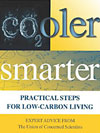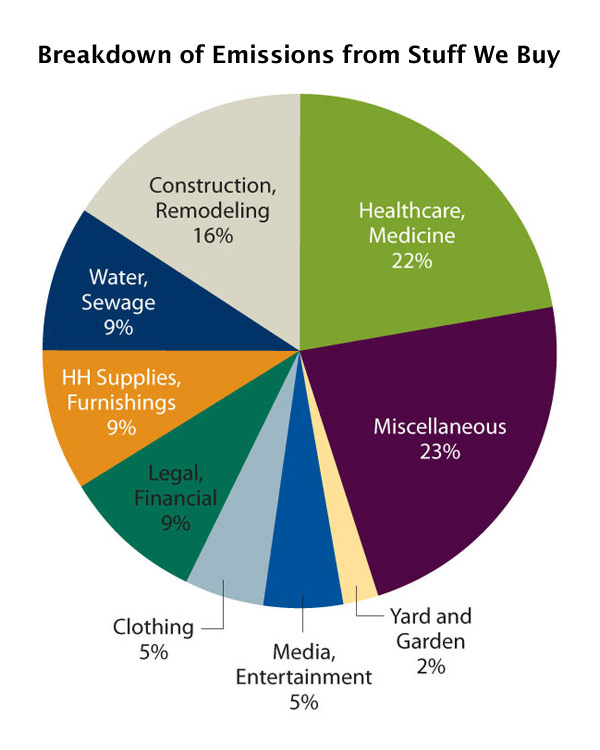It began at the baby shower of our firstborn-to-be and ended at, er, the appliance store. Sometimes the journey to cut the carbon emissions from the stuff we buy leads to strange places. But as I learned from our research for the new UCS book Cooler Smarter, the secret to climate-friendly shopping comes down to a simple strategy: Make smart decisions about what you buy—or don’t buy in the first place.
 This is part of a series on Cooler Smarter: Practical Steps for Low-Carbon Living.
This is part of a series on Cooler Smarter: Practical Steps for Low-Carbon Living.
The baby shower was quite the experience for me, as someone who hadn’t spent much time with wee ones. In particular, I had no idea what a Onesie® was, which end was up, or why on earth we would ever need so darn many. Just a few ill-fitting diapers and other gastronomical/intestinal incidents later, though, I got it: outfit changes (and washings) are to newborns what costume and wig swap-outs are to Lady Gaga.
The embarrassment of Onesie® riches, though, turned out just to be a foreshadowing of all the things that seem to come with having kids — the clothes, the toys, the school supplies, the sports gear,…

The "Stuff" category includes a smorgasbord of consumer goods and services -- from diapers to X-rays to water bills -- and plenty of opportunities for cutting your carbon.
To buy or not to buy (or both)
As our research for Cooler Smarter found, the Stuff You Buy (our decidedly scientific term for the rest of our carbon emissions once you separate out transportation, home heating/cooling and electricity, and food) turns out to be responsible for over one-quarter of our personal carbon emissions. Even though the Stuff category is less of a single dish than a smorgasbord with a lot of different goods and services, there are opportunities to cut your carbon in these areas, too.
The main approaches to reducing your carbon emissions through your Stuff category decisions are (1) buy less and (2) make smart decisions when you do buy. The carbon implications of number 1 should be pretty obvious. Recycling and reusing are important strategies, but the reduce part of “reduce, reuse, recycle” takes the cake.
Number 2 is about buying quality products that won’t wear out quickly, buying used or refurbished items when you can, or buying in a way that drives positive change — buying products made from recycled materials, for example, to close the loop on recycling.
Cosmic cahoots for marital bliss
An important add-on to the list above, though — (2)(b), perhaps — is buy more. If what you’re buying is a much more energy-efficient replacement for some big energy user you already own — a car or fridge, for example — buying can be much better for your carbon emissions than not buying. For most items like those, the carbon emissions associated with producing them and shipping them your way are a small fraction of the emissions involved with using them.

Our new fridge: Shiny, new, and oodles more efficient. What's not to love?
I like category 2b because it’s one area where there’s a great confluence between my wife’s passion for new things and my fervent desire to spend less on utilities and cut our carbon. And in the case of kitchen remodeling underway at our house right now, that confluence is a beautiful thing. Even though our old fridge was high efficiency when we got it in 1999, the one we’re replacing it with, even though it’s 18 percent larger, is shiny, new, and 35 percent more energy efficient. Everybody wins!
If you can’t take the heat
Meanwhile, outside the kitchen, because of the disruption of the renovations, the “stuffness” of our house is even more apparent; it’s clear there are plenty of opportunities for us in the Stuff You Buy category, even if Onesies® are a thing of the past for us. But as with so much that Cooler Smarter covers, having good information about what matters and what we can do about it is an important step toward dealing with the carbon-ness of Stuff. Even if it can’t help you avert diaper disasters.
